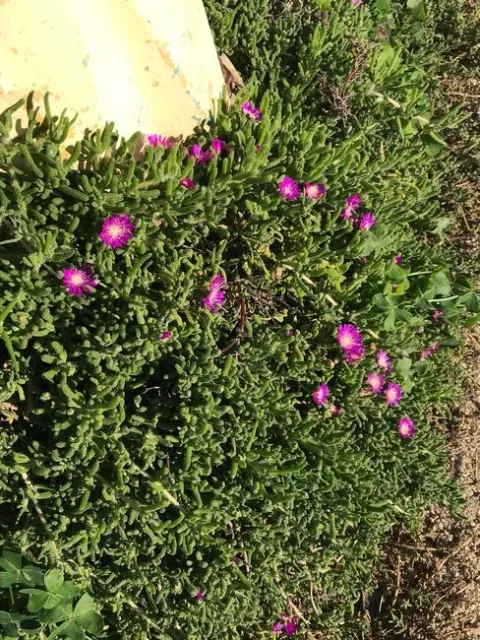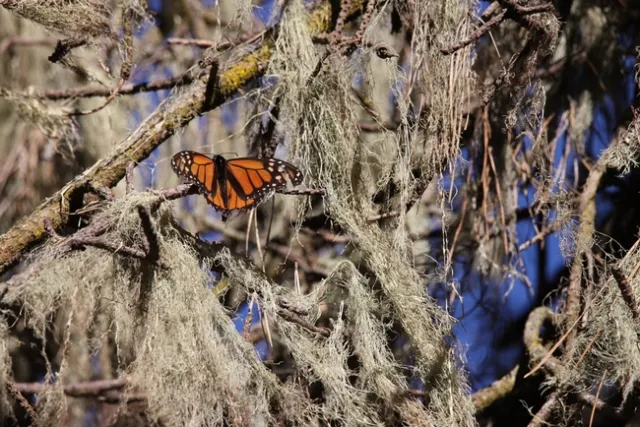The third week of January we were able to return to one of our favorite areas, the Monterey Bay. We stayed in Pacific Grove just a few blocks above Lover's Point. After unpacking we quickly walked down to the point and then along the shore trail to Perkin's Park. We were mesmerized by the Aloe arborescens, or torch aloe, in full bloom. The scarlet spires were an incredible contrast against the blues of the sky and ocean. After the weeks of gray days, we just drank in the color. The plant clearly demonstrated its ability to thrive in sea spray.

As we were walking along the trail, I kept close watch on the ground. I remembered when we had been here before, in spring or early summer, and had seen the beautiful “Magic Carpet” of pink, blooming Drosanthemum floribundum. It is truly a sight to behold. Photographers, painters, and tourists flock to the area each year. I really had not expected to see any flowers, but did find one small clump of early birds.

We also wanted to visit the Pacific Grove Monarch Sanctuary. We had been there many years before. The Sanctuary is one of the over-wintering sites for monarch butterflies that live west of the Rocky Mountains. The Pacific Grove Museum of Natural History keeps counts during the over-wintering season, mid-October to mid-March, and posts the counts on their website www.pgmuseum.org. The counts began in 1997 and averaged 45,000. In 2020 the count was zero at the sanctuary and very low at other sites as well. In 2021 the count was 13,000. The Thanksgiving count for 2022 was 15,960 and for mid-December was about 10,000. The week we were there, it was 9,000. These counts are undertaken by dedicated citizen scientist volunteers. They count them when the monarchs are hanging in clusters from the trees. The butterflies cluster to help preserve heat and are relatively motionless. The main sheltering trees in the habitat are Eucalyptus, Cypress, andMonterey Pine.

There are docents from the museum at the Sanctuary from 11:00 to 3:00. They explained that if the temperature is below 55 degrees Fahrenheit, the over-wintering monarchs stay in their tight clusters. Once it hits 55 degrees, they start to move to flowering plants to feed on nectar. There were many flowering trees and shrubs including bottlebrush, eucalyptus and acacia. They especially seemed to like a small blooming fruit or nut tree, that was covered in pink blossoms. This tree was in full sun and seemed to be a magnet for the butterflies.
The butterflies slowly glided overhead from one spot to another. It felt a little like being inside a monarch snow globe. The docents were hopeful about the rebound from 2020, but cautioned us that we had to see if the increases would persist over the coming years. I don't think we will ever be complacent about Monarch populations again. And that is what makes seeing them in numbers even more special.

